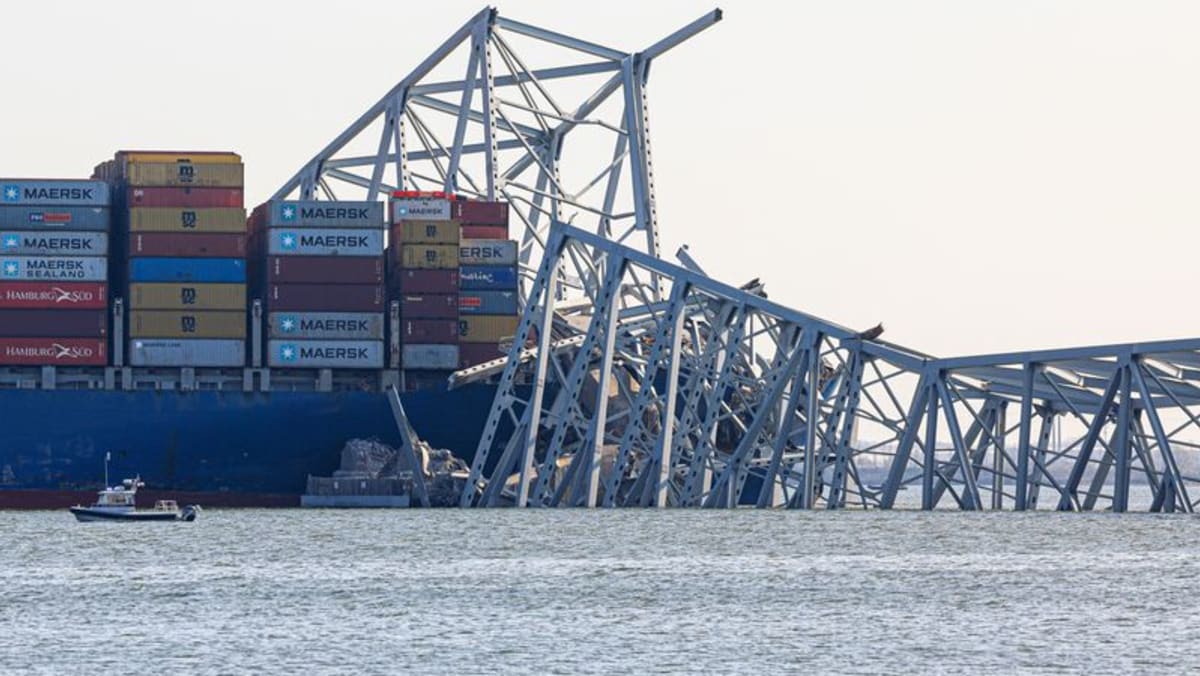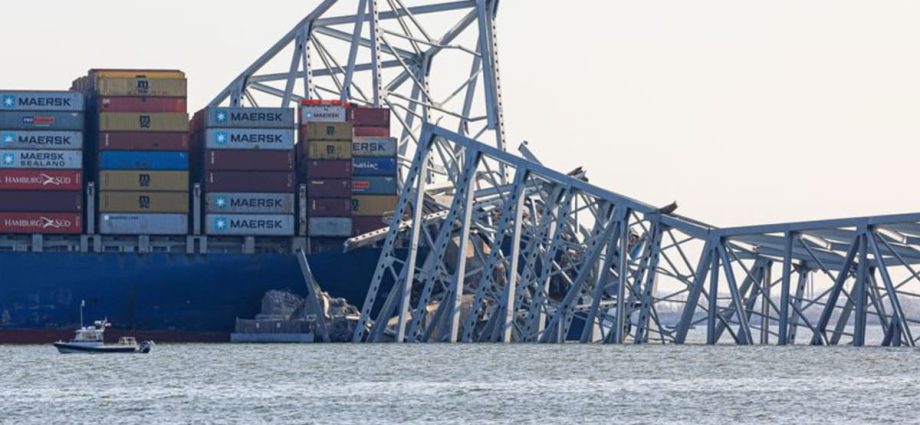
The owner and manager of a cargo ship that rammed into Baltimore’s Francis Scott Key Bridge before it collapsed last week filed a court petition on Monday (April 1) seeking to limit their legal liability for the deadly disaster.
The companies’ “limitation of liability” petition is a routine but important procedure for cases litigated under US maritime law. A federal court in Maryland ultimately decides who is responsible — and how much they owe — for what could become one of the costliest catastrophes of its kind.
Singapore-based Grace Ocean Private Ltd. owns the Dali, the vessel that lost power before it slammed into the bridge early last Tuesday. Synergy Marine Pte Ltd., also based in Singapore, is the ship’s manager.
Their joint filing seeks to cap the companies’ liability at roughly $43.6 million. It estimates that the vessel itself is valued at up to $90 million and was carrying freight worth over $1.1 million in income for the companies. The estimate also deducts two major expenses: at least $28 million in repair costs and at least $19.5 million in salvage costs.
The companies filed under a pre-Civil War provision of an 1851 maritime law that allows them to seek to limit their liability to the value of the vessel’s remains after a casualty. It’s a mechanism that has been employed as a defence in many of the most notable maritime disasters, said James Mercante, a New York City-based attorney with over 30 years of experience in maritime law.
“This is the first step in the process,” Mercante said. “Now all claims must be filed in this proceeding.”
A report from credit rating agency Morningstar DBRS predicts the bridge collapse could become the most expensive marine insured loss in history, surpassing the record of about $1.5 billion held by the 2012 shipwreck of the Costa Concordia cruise ship off Italy. Morningstar DBRS estimates total insured losses for the Baltimore disaster could be $2 billion to $4 billion.

